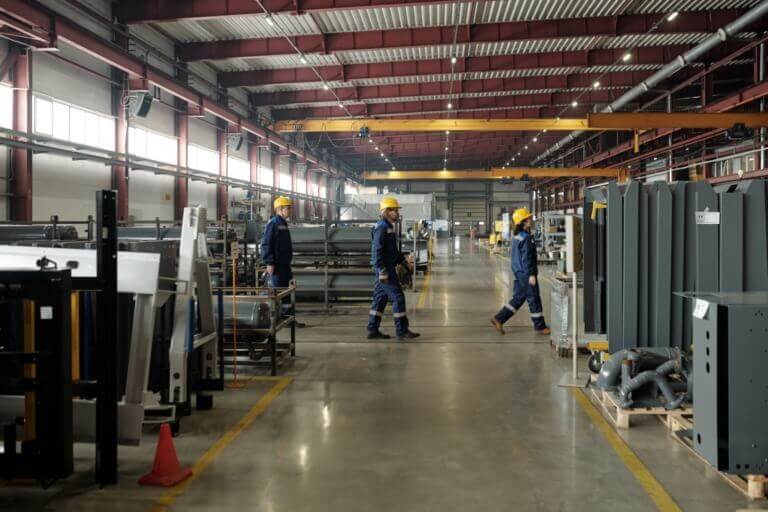The global economy continues to face unprecedented challenges, with rising tariffs creating significant uncertainty for labor organizations, businesses, and workers alike. For union leaders, employers, and workers, the stakes have never been higher. The ripple effect of these economic tensions often leads to job insecurity, wage stagnation, and strained labor conditions.
But labor organizations are uniquely positioned to lead through times like these. By implementing forward-thinking strategies, they can protect workers’ rights, adapt to a shifting landscape, and advocate for improved policies. This post explores these strategies, starting with an understanding of the current economic climate and its impact on labor.
Understanding the Current Economic Landscape
Economic uncertainty has become a defining feature of the modern global economy. Inflation, trade conflicts, and shifting international alliances have amplified financial instability, and tariffs have become a central pain point in these dynamics.
Tariffs—essentially taxes placed on imported or exported goods—aim to protect domestic industries but often lead to unintended consequences. With higher costs of goods and disrupted trade flows, businesses struggle to maintain profitability, which directly affects labor markets. For instance:
- A 25% tariff increase on steel imports in the U.S. during 2018 led many manufacturers to report rising production costs.
- Agricultural tariffs imposed amidst trade disputes with China resulted in declining exports, leaving thousands of workers in the farming sector vulnerable.
Understanding this connection between tariffs and labor is critical for labor organizations striving to safeguard their members.
Impact of Tariffs on Labor
How Tariff Policies Shake the Foundations of Job Security, Wages, and Working Conditions
For many workers, the direct consequence of tariffs manifests in job insecurity. When businesses face higher operational costs due to tariffs, layoffs and downsizing often follow. Small to medium-sized enterprises (SMEs), which lack large reserves of capital, are hit particularly hard. This, in turn, reduces workforce stability.
Tariffs also hinder the potential for wage growth. Declining business revenues often lead employers to freeze wages to cut costs. Additionally, some employers may reduce benefits, such as healthcare packages or retirement contributions, further straining workers’ livelihoods.
But the challenges extend beyond economics. Tariffs can disrupt supply chains, forcing businesses to rely on lower-quality materials or increased automation, altering working conditions. For example:
- Factory workers may face more strenuous day-to-day operations due to diminished resources.
- Agricultural laborers may experience longer hours to compensate for reduced productivity in exporting goods.
The long-term concern? A widening gap between business profitability and employee welfare. This highlights the urgent role labor organizations must play in protecting the interests of their members.
Strategies for Labor Organizations to Navigate Uncertainty
1. Negotiation Tactics for Fairness Amid Disruption
Tariffs are unpredictable, but robust negotiation tactics are not.
Labor organizations must advocate for terms that provide job security, preserve wages, and maintain working conditions regardless of economic turbulence. This means approaching collective bargaining sessions with data-driven strategies:
- Contingency Clauses: Request workforce protections that kick in during times of economic distress caused by tariffs or other trade disputes.
- Cost-of-Living Adjustments (COLA): Tie wage increases to inflation rates so that workers’ purchasing power remains intact.
- Comprehensive Health Benefits: Prioritize critical benefits over non-critical perks to meet workers’ most pressing needs.
Proactive steps like these ensure that workers’ rights are accounted for—even during periods of economic volatility.
2. Supporting Skill Development for a Resilient Workforce
Economic upheavals driven by trade policies often highlight the importance of adaptability—both for businesses and their employees.
Labor organizations can lead the charge by supporting skill development programs that empower workers to pivot as industries evolve. Initiatives worth exploring include:
- Workforce Training Funds: Pool resources to subsidize technical certifications or apprenticeships for members.
- Partnerships with Educational Institutions: Collaborate with universities and trade schools to offer relevant courses tailored to shifting industries.
- Upskilling for Automation: Provide pathways for workers in traditional roles (e.g., assembly line operators) to gain proficiency in modern technologies being adopted by industries.
For example, industries like manufacturing or agriculture impacted by tariffs could benefit from reskilling initiatives in areas like logistics, robotics, or export regulation management. Equipping workers with these skills ensures their long-term relevance, regardless of external challenges.
3. Advocacy for Smarter Trade Policies and Worker Interests
Navigating tariff-induced uncertainty also requires engaging policymakers.
Labor organizations should actively participate in discussions about trade policies. Advocacy initiatives could involve:
- Collaborating with Trade Coalitions: Encourage policymakers to prioritize labor-friendly trade deals that protect jobs and advance workers’ interests.
- Publishing Impact Reports: Use industry or worker-focused data to highlight how specific tariffs negatively influence wages, job security, and businesses.
- Community Engagement Campaigns: Mobilize members to petition for less-disruptive government tariff policies, amplifying the collective voice of organized labor.
A notable example comes from the automotive sector, where unions have successfully lobbied for tariff exemptions on critical components, aiding both employers and employees in reducing financial strain.
Advocacy ensures that policymakers hear labor organizations’ concerns before drafting legislation that could disrupt industries further.
Paving the Way Forward
The economic challenges posed by tariffs underscore the need for labor organizations to take decisive, strategic action. By adopting robust negotiation tactics, supporting skill development, and amplifying their advocacy efforts, unions and labor leaders can effectively mitigate the impact of tariff disruptions on their members.
More importantly, organizations must remain agile—ready to adapt as new trade policies emerge and industries evolve. For labor organizations aiming to thrive in an unpredictable economy, the combination of foresight and adaptability is key.
Labor organizations and employers working together can create frameworks that align business continuity with worker well-being—a win-win in the face of uncertainty.
Feel equipped to address these challenges head-on? Take the first step by analyzing how tariffs are affecting your workforces and don’t hesitate to collaborate with industry experts who can guide you toward the right strategies.


